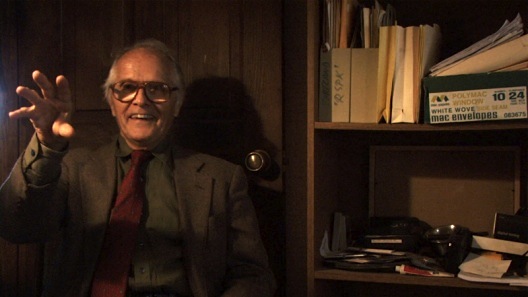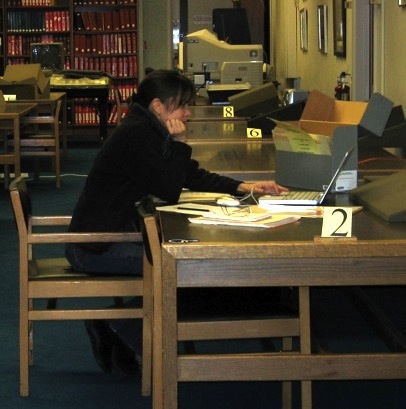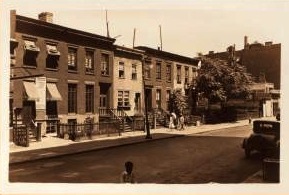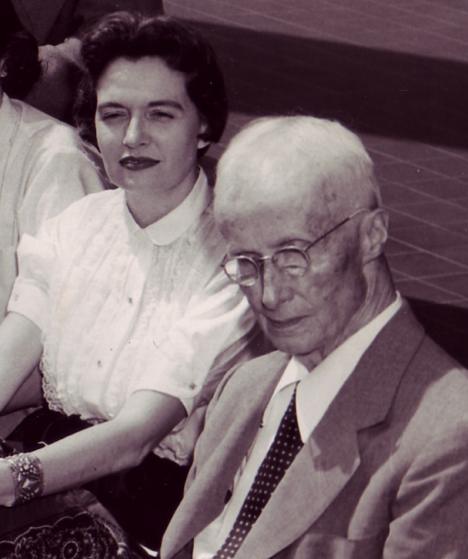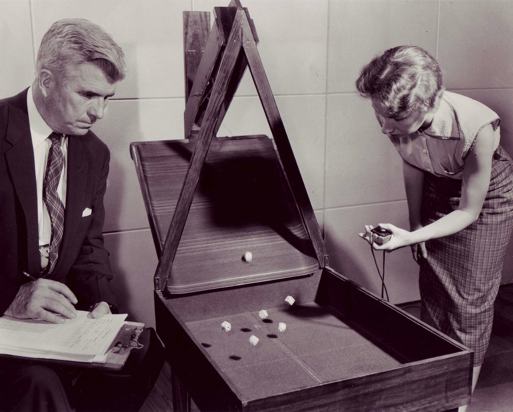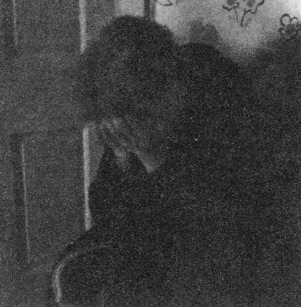I wanted to talk about the Parapsychology Laboratory Records which are housed at the Rare Book, Manuscript, and Special Collections Library of Duke University. There are over 700 boxes of records there and it was impossible for me to go through them all. It just kills me, thinking of all the stuff I must have missed.

I employed my version of something called data sampling. I learned this in my telecommunications days. For every decade of records, I looked at a certain number of boxes, and then within those boxes, I looked a certain number of papers. I hoped my sampling rate was high enough to give an accurate picture of the history of the Parapsychology Lab.
But I know I must have missed tons of great finds. For instance, had I picked up a different folder I would have missed the letter from Einstein. Or the one from the priest in the Exorcist case. What is in all the boxes and folders I didn’t look at??
I copied much of what I looked at and brought it all back to New York. Then I started making timelines, lots and lots of different timelines, some general, some focusing on different areas. Here’s one where I was highlighting letters from the military and business.
This is just one decade, and focusing on one area, and yet look at the richness of activity. And that was just a sample!! What was in the thousands and thousands of letters I didn’t look at??
1956. Scientists at the Army’s Cambridge Electronics Laboratory become interested in testing the practical communications possibilities of ESP.
1957. A colonel from the Army’s Intelligence Board writes Rhine about a psychic girl in Virginia who gave them a demonstration. Rhine says she is a fraud. [I plan to do a post about this girl later. The FBI investigated her too.]
1958. An engineer from Convair’s Radio Astronomy Project asks Rhine if he’s “ever attempted to correlate the variation in the ability of good ESP subjects with the variation of sunspot numbers?” Rhine’s response: No.
1958. A chemist from the Army’s Ordinance Missile Command writes about a guy making claims in Italy. Rhine doesn’t take the Italian’s claims seriously.
1958. General Precision Laboratory invites Rhine to confer with them about ESP possibilities.
1959. Vernon Walsh, the Vice President of Communications at General Dynamics, says that ARPA called him about using parapsychology for defense. Walsh visits Rhine.
1959. Rhine speaks at NYU’s Institute of Philosophy. “I was one of the discussants of a paper given by Norbert Weiner. The audience was mostly philosophers, mathematicians, and computer experts. I do not think I made much impression on them. On the other hand, there was no show of opposition or criticism. I suppose one could say they have their own bonnets full of their own bees.”
1959. Rhine addresses the American Institute of Electrical Engineers on ESP, at the Western Union Telegraph Company auditorium, 60 Hudson Street. It was part of a night all about communications.
1960. Pratt meets briefly with a Colonel in the Air Force, Rhine follows up with a proposal for an Air Force ESP test.
1961. In response to repeated letters from Rhine, a colonel from the Office of the Chief of Research and Development for the Army says they can’t find any evidence of any contract with Puharich. But Rhine responds that he has found out and there is a contract, but he was sworn to secrecy.
1961. Someone from MIT’s Lincoln Laboratory tells Rhine that Charles Radar said his intention was to disprove Rhine’s results.
1961. IBM conducts an ESP experiment in Canada. Rhine works with them as a consultant. [I’m going to do a post about this test later.]
1961. Rhine addresses the Institute of Radio Engineers in California. A colonel from the Air Force is in attendance and says he’s going to try “to stir up something there.” He talks about their work with drugs.
1961. Hughes Aircraft writes about this computer they’re using to calculate missile hit probabilities. He’s concerned that PK could affect missile guidance systems.
1962. A psychologist from Army Recruiting who had discussed hypnosis and ESP with Aldous Huxley writes Rhine at Huxley’s suggestion.
1962. The Defense Academy of Japan sends an assistant professor to the Lab.
1965. Sylvania Electronic Systems, then a subsidiary of General Telephone & Electronics Corporation, contacts Rhine. They want to set up a parapsychology research program and could he suggest someone to manage the project which would emphasize techniques to enhance ESP.
1965. Rhine hears about Bob Monroe, who would go on to found the Monroe Institute.
You could pick any decade, or any year, and get a wonderful snapshot of activity. I would have loved to have spent a few more years looking. There is just so much in there. You can see for yourself here!
The picture is of the building that houses Special Collections. It’s a beautiful place. And, the librarians there are some of the nicest, most helpful librarians in the world (but all librarians are saints, though).

